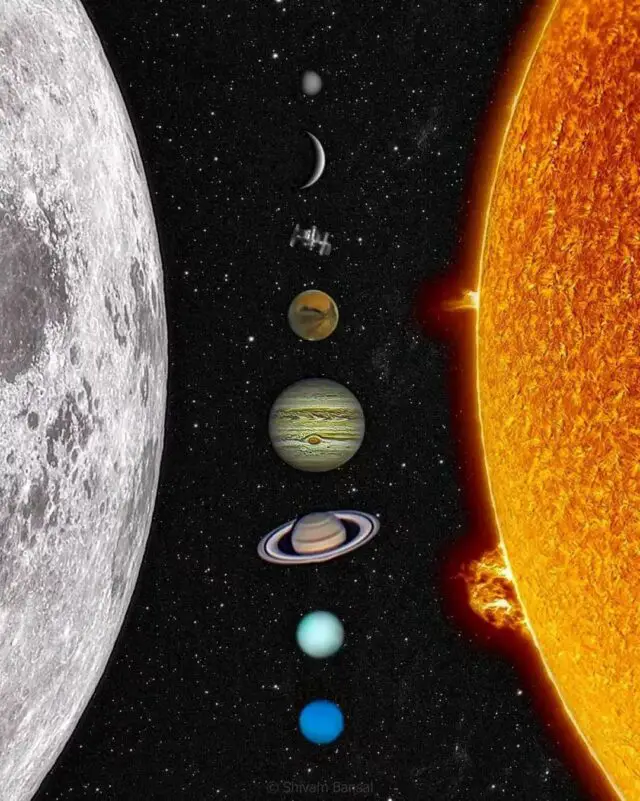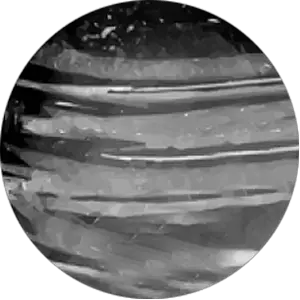Astrology views the night sky as a vast stage where planets play their roles. Each planet possesses its unique personality, influencing individuals as they traverse the zodiac signs.
Throughout history, humanity has been captivated by the sky, forming a universal bond across time and place. Initially, the focus was on visible planets like Mercury and Mars, but now Uranus, Neptune, and Pluto are also considered.
Astrologers analyze these celestial bodies to decipher individual personalities and life paths. While your sun sign is determined by the sun’s position at birth, other planets also shape your fate. Their movements, called transits, impact the collective mood, while retrogrades prompt introspection.
What Does the Planet Mean in Astrology?
Ancient observers noticed repeating patterns in the stars, linking planetary movements to earthly effects and personality traits. Today, astrology uses these insights predictively and as guides for life.
Planets and luminaries act as characters in life’s theater, with zodiac signs as costumes and houses as stages. Planetary alignment at birth reveals traits, beliefs, and interactions. Each planet symbolizes different aspects of life, aiding astrological understanding:

1. Mercury: The Planet of Mind and Communication
Mercury, the planet of communication and intelligence, transitions between zodiac signs every 3 to 4 weeks. In astrology, it reflects your mental processes and communication style. Collectively, it influences mental trends, the economy, and media.
As the closest planet to Earth, Mercury’s impact is strong. Named after the messenger of the gods, it embodies quick changes and volatility. Its placement in your chart affects how you analyze and convey information, shaping your routines and habits.
2. Venus: The Planet of Love, Beauty and Money
Venus, representing love, attraction, and harmony, transitions between zodiac signs every 4 to 5 weeks. In astrology, it reflects your aesthetics and love language.
Collectively, it influences romantic energy and connections. Linked to self-worth, Venus governs pleasure, partnerships, and social grace. In Greek mythology, it corresponds to Aphrodite, symbolizing beauty and passion.
Venus’ placement affects finances and sense of value, influencing style and the arts. During its transit, Venus shapes collaboration, spending habits, and interpersonal relationships.
3. Mars: The Planet of Physical Energy, Assertiveness and Aggression
Mars, representing passion, courage, and aggression, moves between zodiac signs every 6 to 7 weeks. In astrology, it symbolizes determination and sex drive as well as influences focus and levels of aggression.
As the ruler of Aries, Mars embodies physical drive and energy. Its placement affects workout preferences and sexual needs. In Greek mythology, Mars corresponds to the god of war, Ares. Its transit impacts collective motivation and involvement in social movements.
4. Jupiter: The Planet of Luck and Opportunity
Jupiter, symbolizing luck, optimism, and growth, transitions between zodiac signs every 12 to 13 months. In astrology, it indicates where you may find good fortune. Collectively, Jupiter influences hope and expansion.
Known as the luckiest planet, it’s associated with beliefs and philosophies. In Greek mythology, Jupiter is akin to Zeus, representing power and adventure.
Its transit encourages following aspirations and broadening horizons. Jupiter’s movement sets the tone for spiritual growth and collective joy every two to three years.
5. Saturn: The Planet of Structure, Responsibility, Time and Routine
Saturn, representing karma, discipline, and life lessons, shifts between zodiac signs every 2 to 3 years. In astrology, it indicates areas where you must take responsibility and overcome obstacles.
Saturn also influences global structures and governments, symbolizing collective karma. Associated with Kronos in Greek mythology, Saturn governs perseverance and authority.
Its placement in your chart, especially during Saturn return, highlights significant life challenges. Saturn’s transit guides collective efforts and challenges, shaping long-term investments and growth.
6. Uranus: The Planet of Revolution, Innovation and Individuality
Uranus, symbolizing change, freedom, and innovation, shifts between zodiac signs approximately every 7 years. In astrology, it reflects how you express eccentricity.
Uranus signifies progressive growth and technological advancement. Discovered in 1781, it’s associated with invention and rebellion. In Greek mythology, Uranus represents the sky god who spurred evolution.
As the ruler of Aquarius, it fosters independent thinking. Due to its distant orbit, Uranus’s influence is more generational than individual, impacting societal shifts and technological advancements.
7. Neptune: The Planet of Spirituality and Illusion
Neptune takes about 10 to 12 years to transition between zodiac signs, influencing generations rather than individuals. In you, it reflects your imaginative and mystical side. In life, it influences art, illusions, scandals, and spirituality.
When Neptune goes retrograde, it makes us think about what’s real and what’s not, encouraging honesty. It’s linked with Pisces and affects dreams, ideals, and mystical interests. Also, it’s tied to deep meditation and substances like drugs and alcohol.
8. Pluto: The Planet of Rebirth, Sex, Death and Transformation
Pluto, though no longer considered a planet scientifically, holds significance in astrology, symbolizing transformation, destruction, and rebirth. It takes about 12 to 15 years to move between zodiac signs, affecting entire generations.
In individuals, Pluto reflects how they undergo profound changes and are reborn. In the broader scope of life, it governs global powers, institutions, and banks.
Associated with Scorpio, it delves into the depths of the subconscious, representing power dynamics and control in daily life. As with other outer planets, Pluto’s influence is more generational than individual due to its slow movement from Earth’s perspective.
In Astrology, Each Planet Has Symbols and Meanings
In astrology, understanding the eight planetary bodies is crucial as each rules different aspects of life, actions, and even body parts. Despite some differences in the definition of planets between astrology and astronomy, all celestial bodies in astrology hold significance.
For instance, Pluto, although debated by astronomers, is considered important in astrology, even though it’s labeled a “dwarf planet.” Similarly, the moon and sun, despite being a satellite and a star respectively, are also considered planets in astrology.
In astrology, the exploration of these planetary influences offers valuable insights into personal dynamics and life events. For more in-depth insights into astrology and to receive personalized monthly horoscopes, visit Horoscope Hub and subscribe today!



